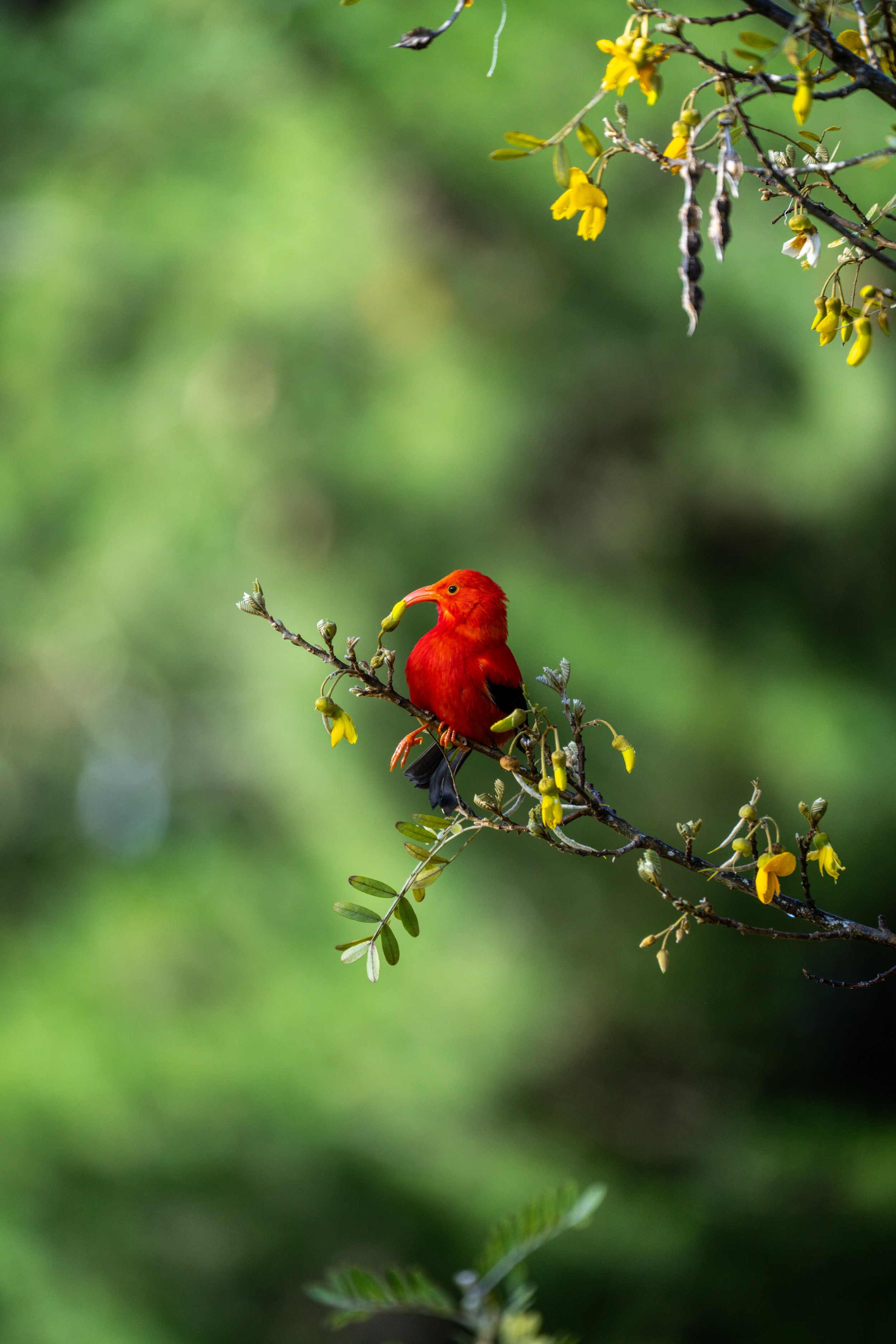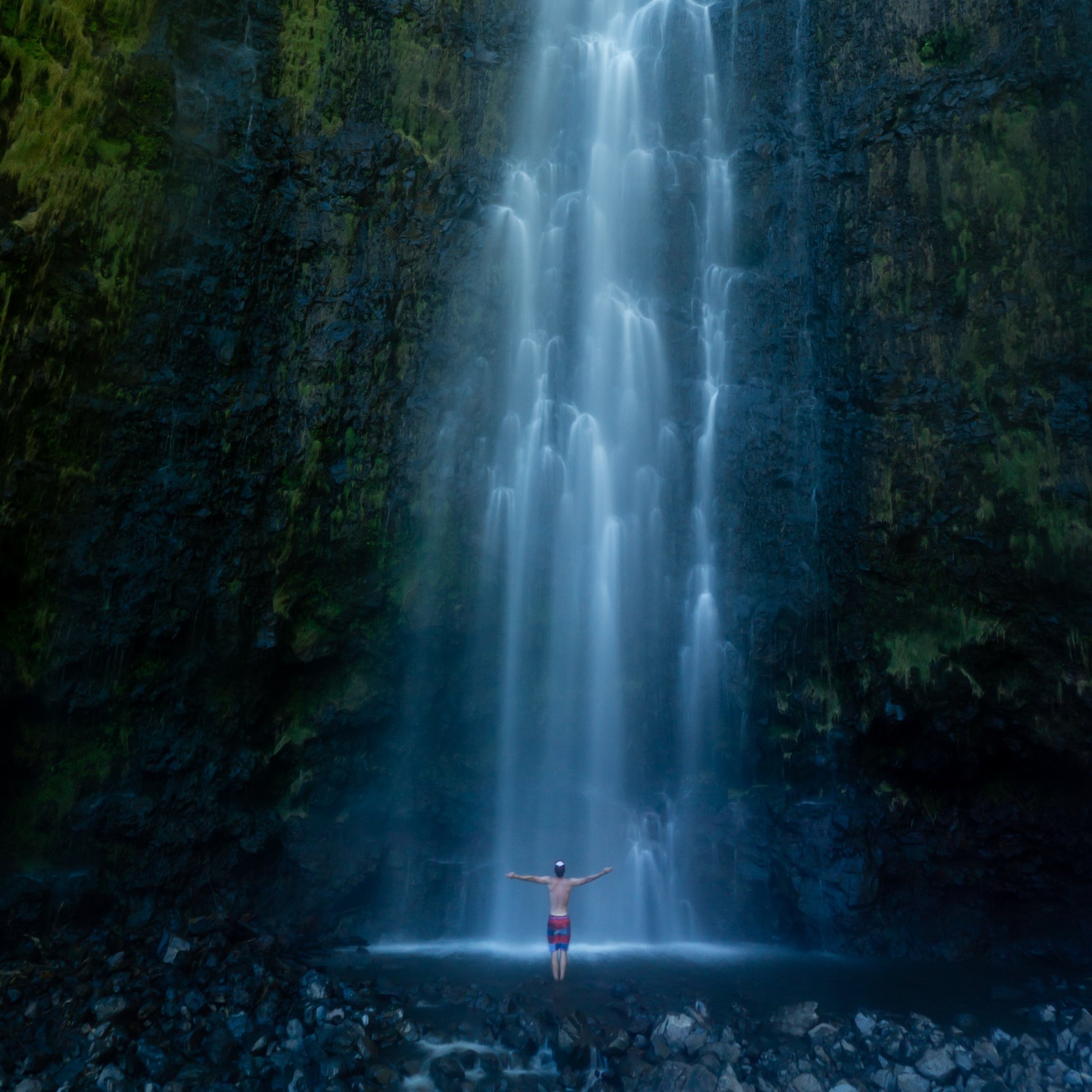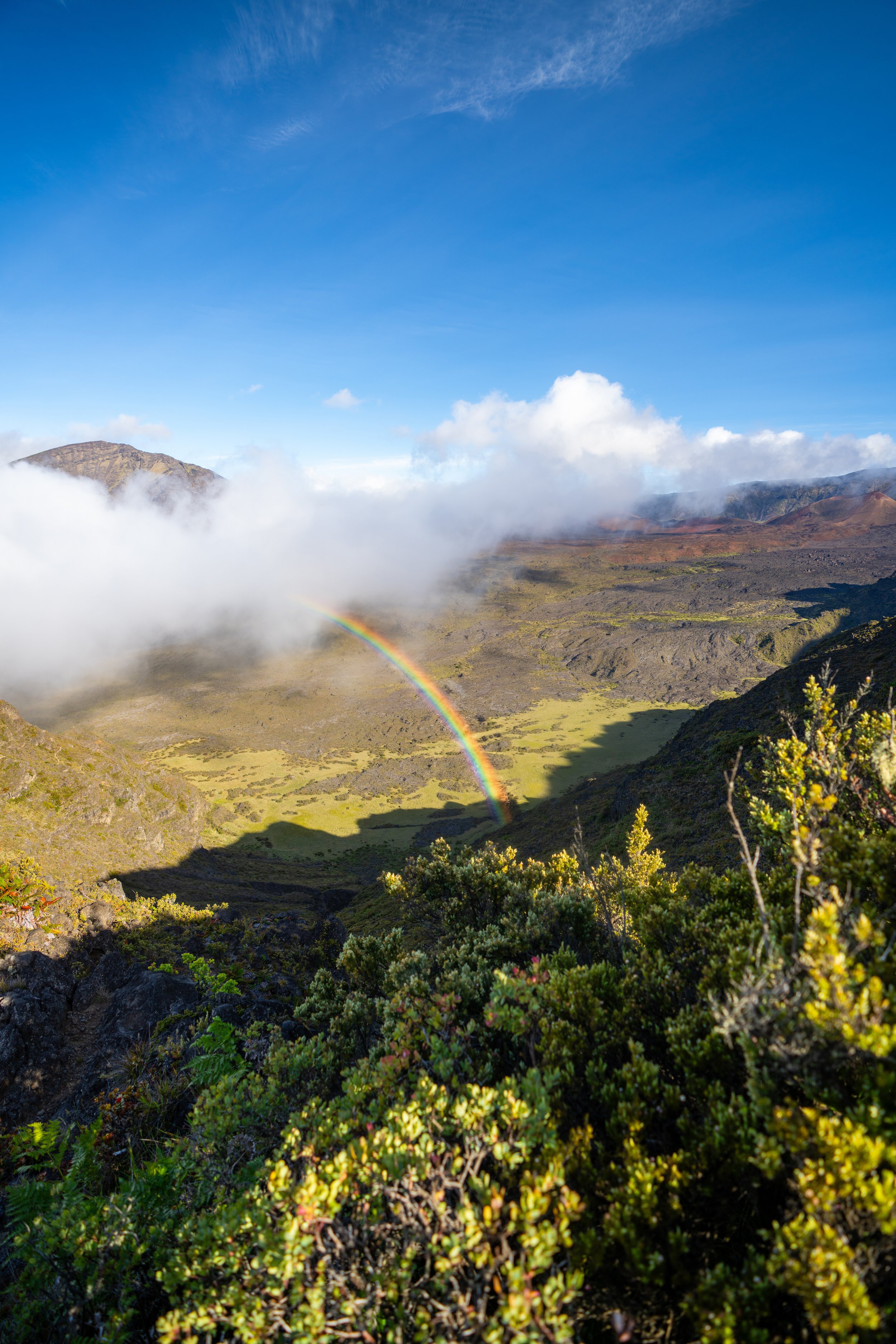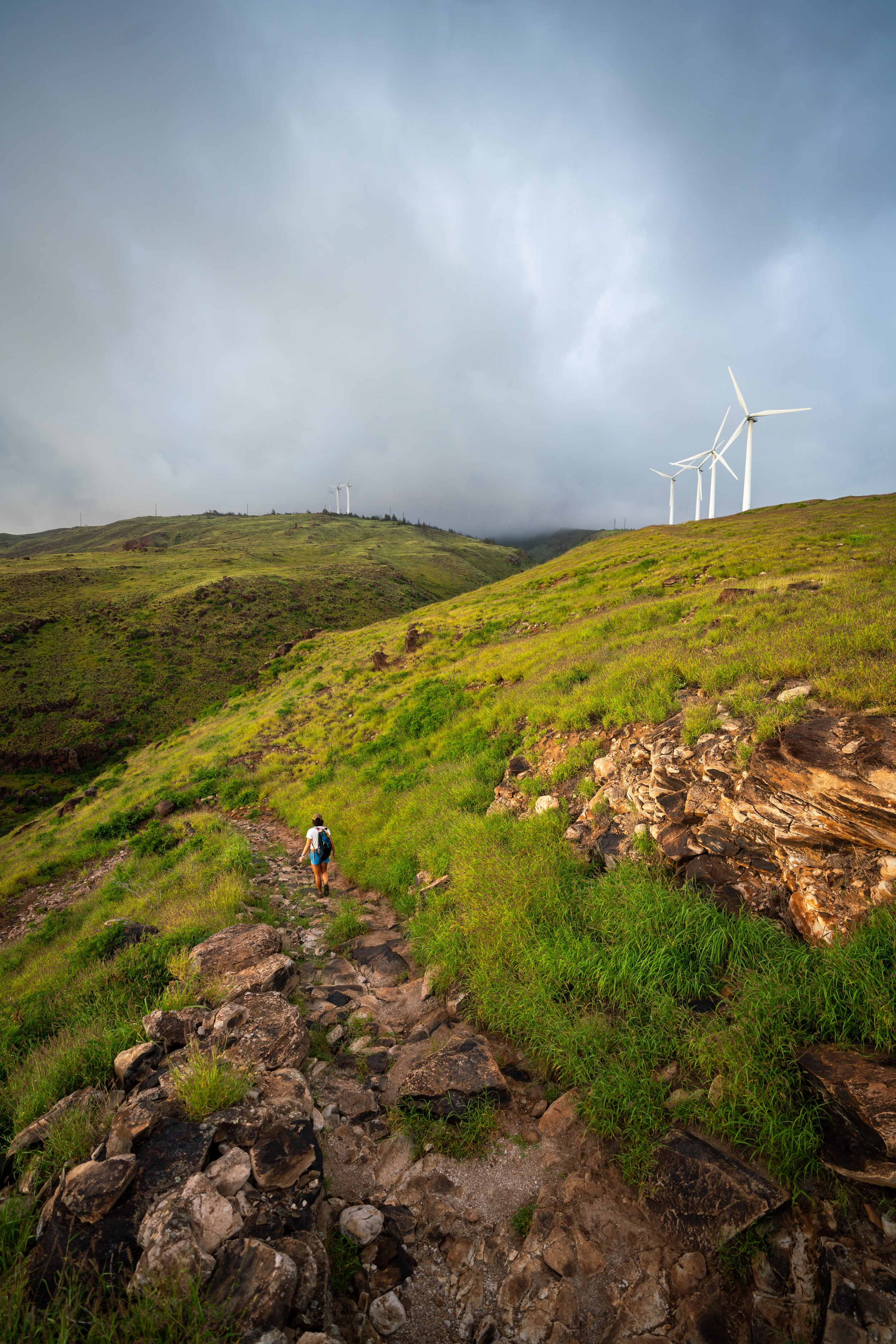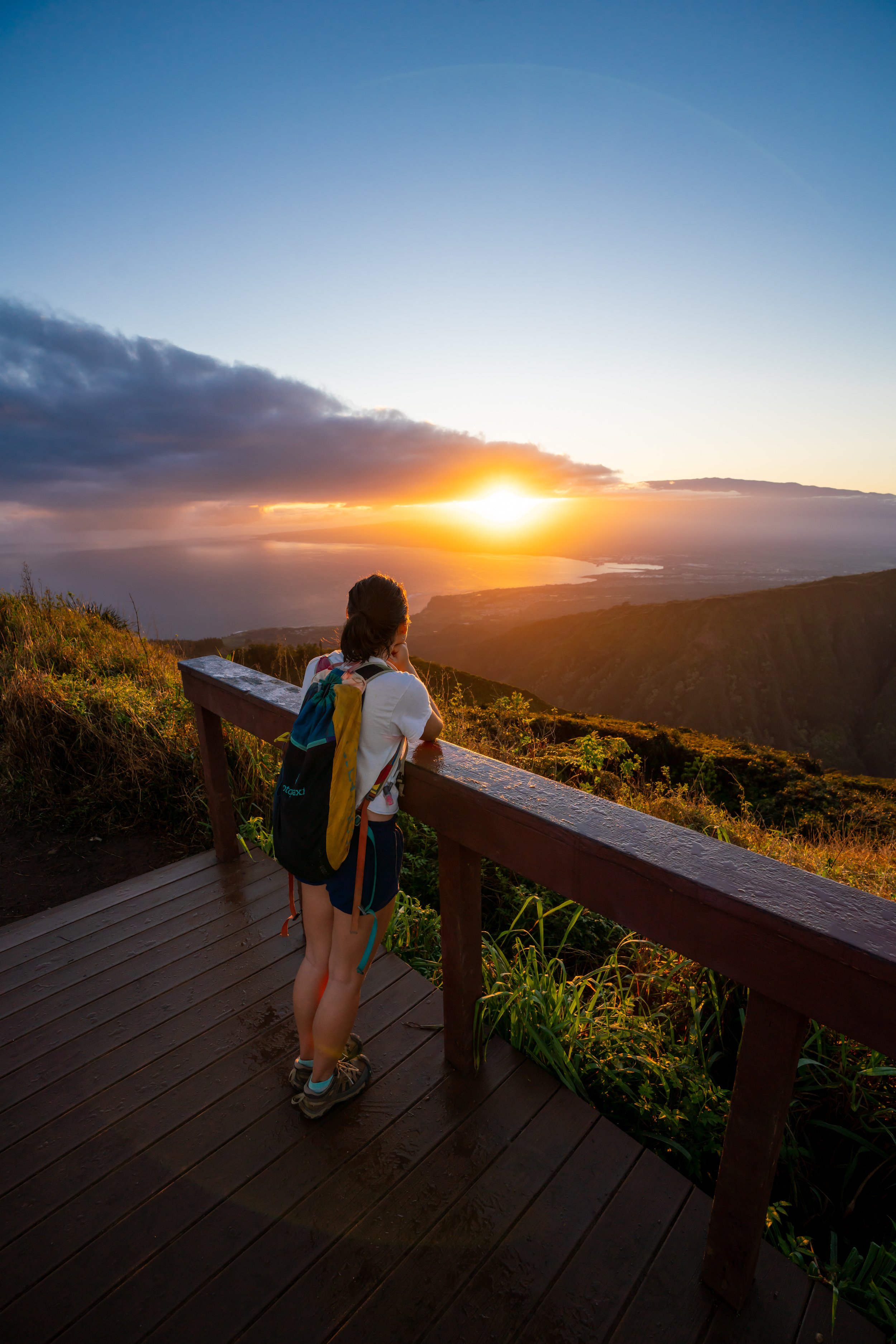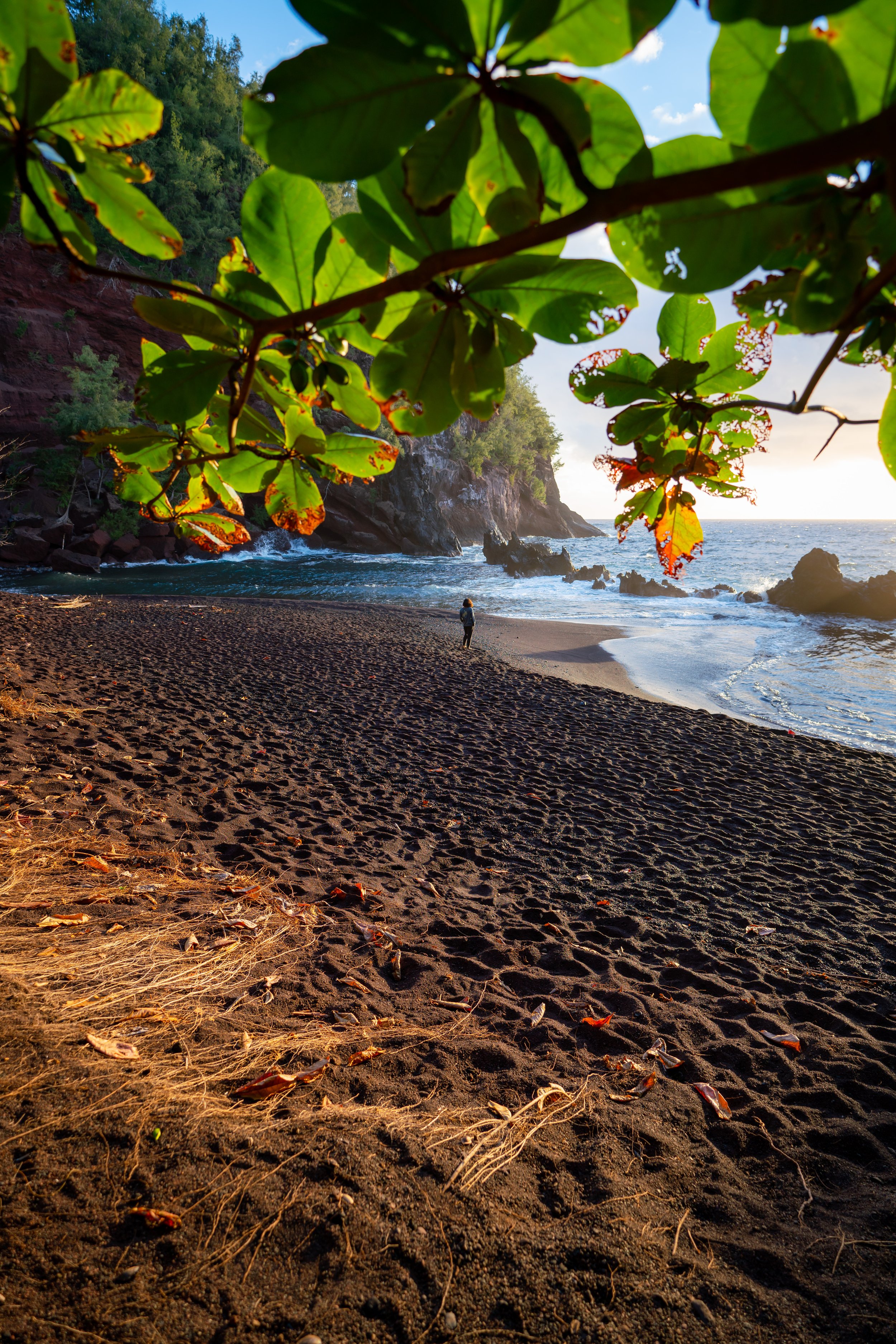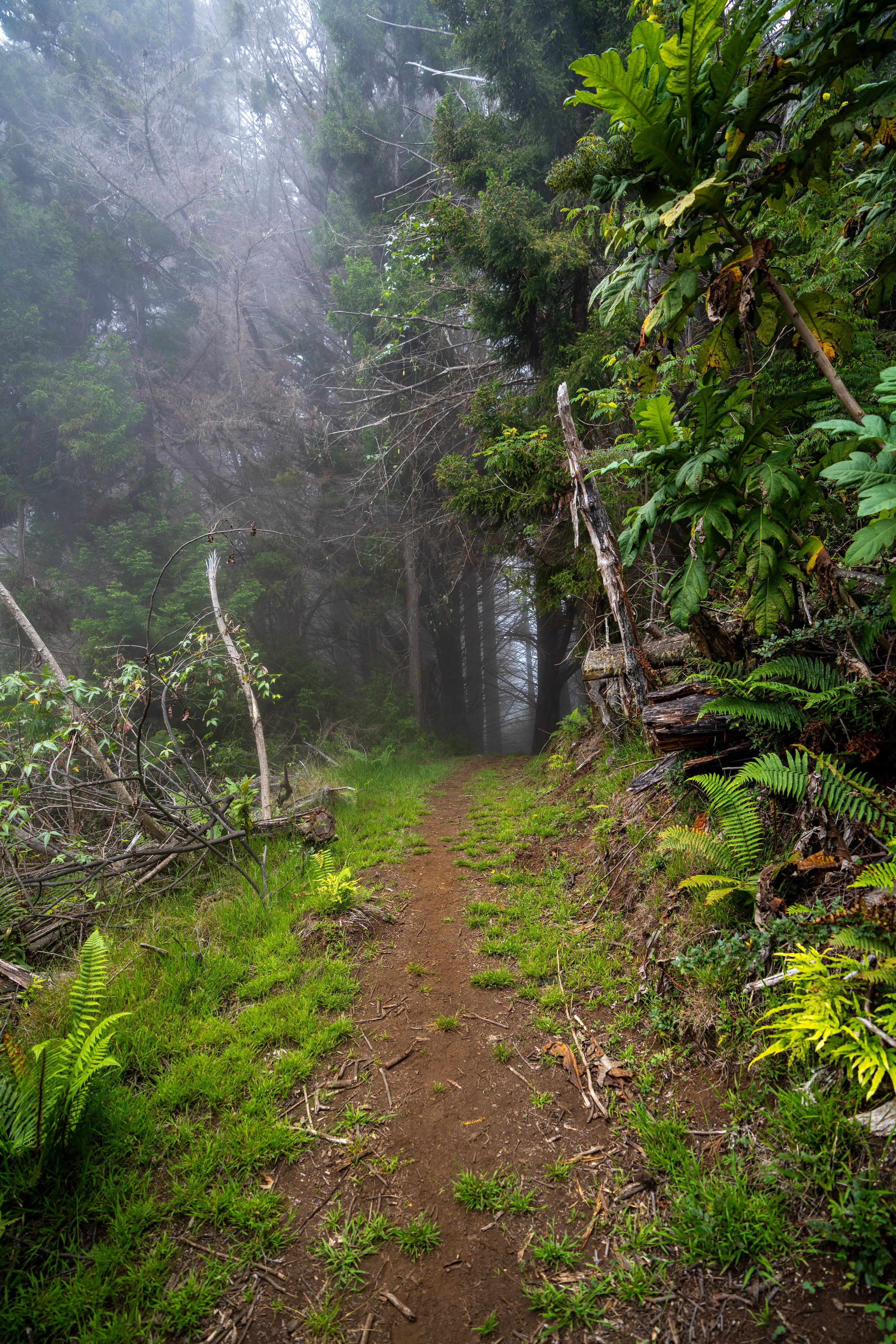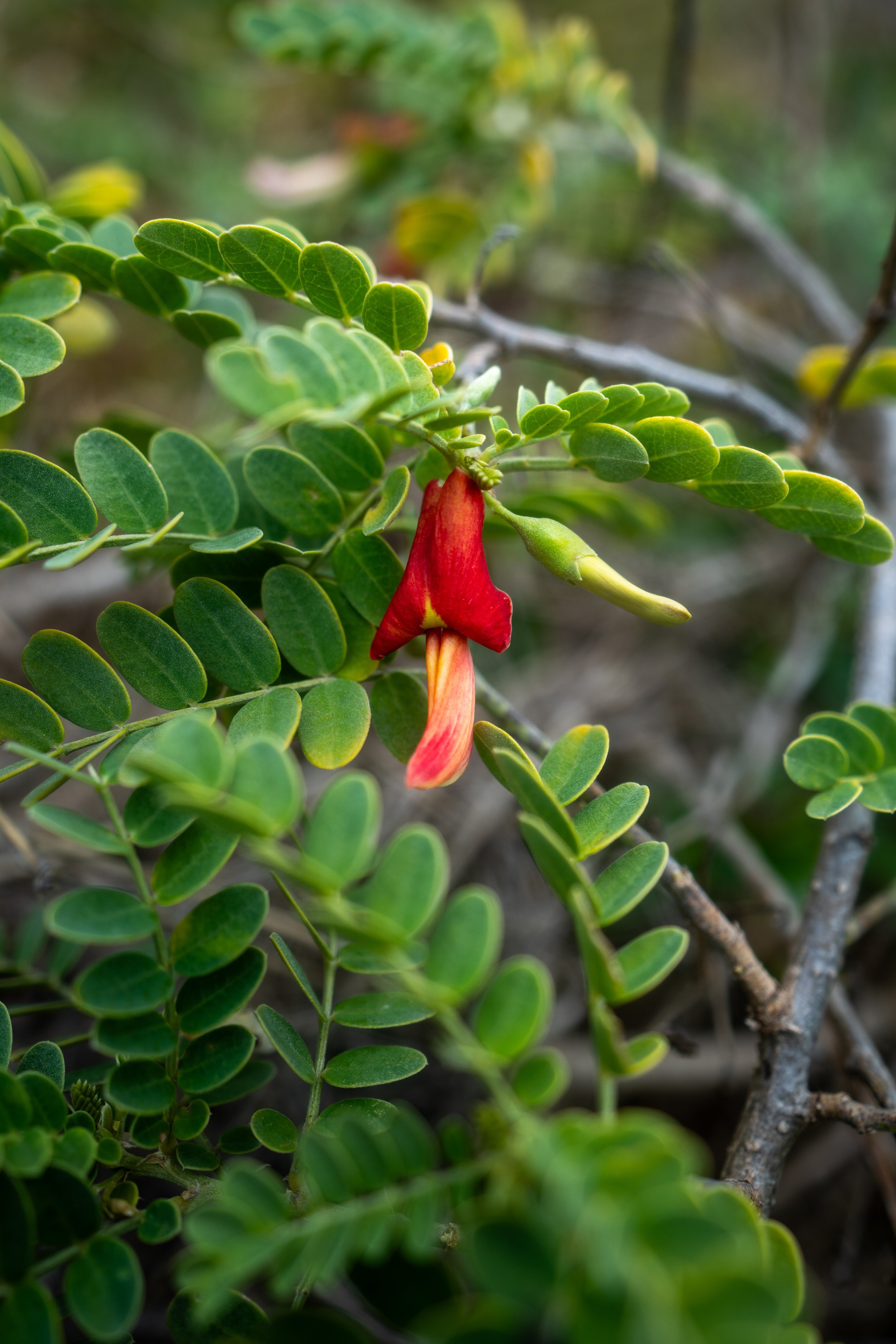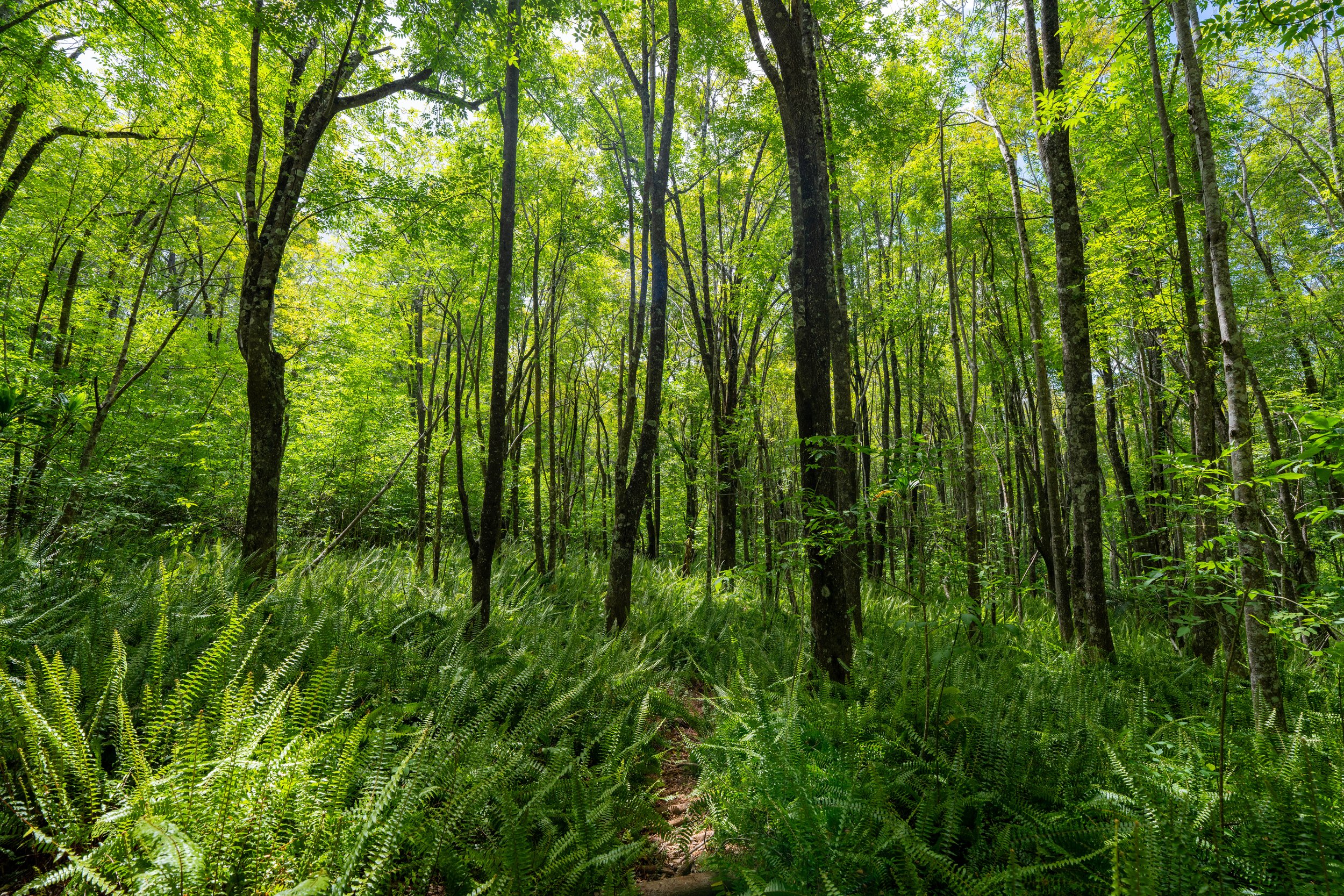Hiking the Kūloa Point Trail (ʻOheʻo Gulch) in Haleakalā National Park on Maui, Hawaiʻi
Distance: 0.7 miles / 1.1 km
The Kūloa Point Trail, also called ʻOheʻo Gulch or Seven Sacred Pools, is an easy coastal loop trail in the Kīpahulu District of Haleakalā National Park that allows visitors the opportunity to learn about numerous Hawaiian cultural sites, as well as enjoy the beautiful waterfalls within ʻOheʻo Gulch.
The short 0.7-mile (1.1 km) loop trail is a great hike for people of all ages, which I absolutely recommend exploring if you’re already visiting east Maui for the Pīpīwai Trail.
Kūloa Point Trailhead Parking
Parking for the Kūloa Point Trail is located in the same parking lot as the Kīpahulu Visitor Center in Haleakalā National Park, about 10.3 miles (16.6 km) past Hāna.
That being said, the Kīpahulu District collects park entrance fees, meaning that it’s best to come prepared to pay to enter the National Park or bring an access pass before arriving.
Google Maps Directions: Kīpahulu Visitor Center
Hiking the Kūloa Point Trail
The Kūloa Point Trail begins at the trailhead adjacent to the Kīpahulu Visitor Center.
With than in mind, I encourage you to talk to their friendly local staff who should be able to help with any questions that you may have about the trails in Kīpahulu, Haleakalā National Park, or Maui in general!
Pīpīwai-Kūloa Point Junction
After just 0.1 miles (0.2 km), the Kūloa Point Trail splits with the Pīpīwai Trail that leads to Waimoku Falls, the tallest waterfall on Maui!
That being said, go right to continue on the Kūloa Point Trail, but if you would like to learn more about the full Pīpīwai Trail, I encourage you to read more in my separate post.
Read My Separate Post: Pīpīwai Trail (Waimoku Falls)
Kūloa Point Loop Trail
Following the Kūloa Point-Pīpīwai junction, the path splits into the Kūloa Point Loop Trail.
If you prefer to hike to ʻOheʻo Gulch and the waterfalls first, go left as I did, or if you prefer to hike toward the coast and the cultural sites first, go right at the split.
ʻOheʻo Gulch (Seven Sacred Pools)
ʻOheʻo Gulch is the first viewpoint along the left side of the loop, and while the stream may look like a fun place to go for a swim, access to the Palikea Stream has been closed for many years following rockfall and numerous tragedies that have taken the lives of multiple people.
Some of these tragedies involved falling, cliff jumping, and the most unpredictable of all, flash floods!
Just a short distance down from the ʻOheʻo Gulch viewpoint, the Kūloa Point Trail will pass by the now-closed access trail for the stream.
That being said, the status regarding access to the Palikea Stream has constantly changed over the years following the changing conditions. However, I again want to stress the dangers of swimming here because, while it might seem like a nice sunny day down in the Kīpahulu District, the mountains above Hāna, specifically Big Bog, are not only the wettest place in Hawaiʻi, but one of the wettest places on earth!
Therefore, all of this constant rain flows down streams, like the Palikea Stream, and on the worst of days, these streams can dangerously swell in size in just seconds!
Past the access trail, there is an optional short side trail toward the far end of the Kūloa Point Loop, if you’re interested in exploring where ʻOheʻo Gulch meets the ocean.
Go left to follow ʻOheʻo Gulch down to the ocean, or go right to continue on the Kūloa Point Loop Trail.
After this short side trail, go left to continue around the Kūloa Point Loop Trail.
As the Kūloa Point Trail parallels the coast, visitors will have a few opportunities to explore a handful of cultural sites, both on and off the trail, in order to learn about the history and culture of Kīpahulu, Maui.
Kūloa Point Loop Junction
Finally, the Kūloa Point Trail returns back to the initial loop split, where the trailhead and Kīpahulu Visitor Center are only 0.1 miles (0.2 km) away to the left.
Native Plants on the Kūloa Point Trail
Kūloa Point is low-elevation trail, which typically means that many of the plants you will see are non-native/ invasive species.
However, the National Park Service actively manages Kīpahulu and plants native species, allowing visitors the opportunity to see plants such as Naupaka, Wiliwili, Hau, Hala, Milo, and Niu, to name just a few.
If you would like to learn more about these and many other native Hawaiian plants from across the islands, I encourage you to check out my separate post linked below.
Read My Separate Post: Native Hawaiian Plant Guide




